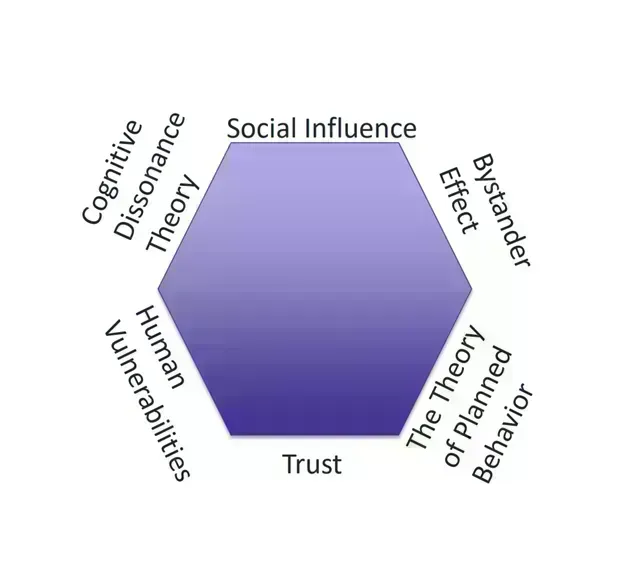



Cyberattacks don’t always start with fancy code or high-tech hacking tools — sometimes, all it takes is a clever email, a fake phone call, or a convincing message on social media. This is called social engineering, and it’s one of the most common and dangerous tactics used by cybercriminals today.
Let’s break it down so students and educators can stay protected.
Social engineering is a type of cyberattack where hackers manipulate people into giving up confidential information — like passwords, bank details, or access to systems.
Instead of “hacking” computers, they hack human psychology — using trust, fear, urgency, or curiosity to trick people into doing something they normally wouldn’t.
🧪 Think of it as a digital con game. You're not attacked by software — you're targeted as the software.
Fake emails or messages that look real but try to trick you into clicking a malicious link or entering your login info.
📨 Example: “Your school account has been locked. Click here to reset your password.”
A more targeted version of phishing, often personalized to the victim (like a teacher or principal).
🎯 Example: “Hey Mr. Kumar, here’s the student list you asked for.” (But the attachment has malware.)
Phone calls pretending to be from tech support, banks, or even your school admin.
📞 Example: “This is the IT department. We need your password to fix your laptop issue.”
Scam messages sent via text, often with a malicious link.
📱 Example: “Congrats! You’ve won a gift card. Click here to claim.”
The attacker creates a believable story or role to get you to share sensitive info.
🕵️ Example: Pretending to be a fellow student asking for login credentials for a group project.
Leaving infected USB drives in public places like computer labs, hoping someone picks it up and plugs it in out of curiosity.
🪤 Example: USB labeled “Exam Answers 2025 – DO NOT SHARE.”
Social engineering works because it plays on basic human emotions, such as:
Fear (of getting locked out of an account)
Urgency (“Act now or lose access!”)
Curiosity (“See who viewed your profile!”)
Trust (messages appearing to be from someone you know)
Even smart, tech-savvy people fall for it — because it’s about emotions, not intelligence.
🎓 A student receives a fake email pretending to be from the university, asking them to reset their LMS password. Their account is compromised and used to send spam.
🏫 A principal gets a spear-phishing email with a fake invoice. Thinking it’s real, the school loses thousands of dollars.
Always verify email addresses and phone numbers. Don’t trust display names alone.
Don’t give out passwords, OTPs, or account details over email, text, or phone.
Hover over links to see the full URL before clicking — especially in emails or texts.
If something feels urgent or “off,” take a moment. Hackers want you to panic and act fast.
Attend cybersecurity training or awareness sessions at school or college. Awareness = defense.
Teach students about digital literacy and critical thinking online.
Use multi-factor authentication for all school accounts.
Run regular phishing simulations to test awareness.
| ⚠️ Red Flag | 🚫 What It Means |
|---|---|
| “Urgent action required!” | Fear-based manipulation |
| “Click here to update info” | Potential phishing |
| Unfamiliar sender address | Impersonation attempt |
| Asking for passwords or codes | Always suspicious |
| Grammar errors or weird links | Likely a scam |
Social engineering attacks are a reminder that humans are often the weakest link in cybersecurity — but we can also be the strongest defense. By understanding how these attacks work and staying alert, students and educators can stay a step ahead of the hackers.
#trending #latest

University Internships That Help You Get a Job After Graduation... Read More.

Is It Smarter to Start at a Community College... Read More.
 Fake posts hit Czech PM Fiala's X
Fake posts hit Czech PM Fiala's X
Fake posts disrupt Czech PM Fiala's X account security
 Switzerland Tightens Export Rules
Switzerland Tightens Export Rules
Switzerland expands export controls on dual-use goods
 Google unveils Ironwood AI chip
Google unveils Ironwood AI chip
Google introduces Ironwood chip to accelerate AI tasks & apps
 TSMC Q1 revenue up 42%
TSMC Q1 revenue up 42%
TSMC sees 42% revenue surge in Q1, surpassing forecasts
 Amazon CEO Outlines AI Vision
Amazon CEO Outlines AI Vision
Amazon CEO reveals AI investment plans in new letter
 Osaka Hosts World Expo 2025
Osaka Hosts World Expo 2025
Japan blends tech and culture at Osaka Expo 2025 launch
 A16z Plans Big Bet on AI Startup
A16z Plans Big Bet on AI Startup
A16z may lead huge round in ex-OpenAI CTO’s new AI firm.
© MyEduGoal. All Rights Reserved. Design by markaziasolutions.com